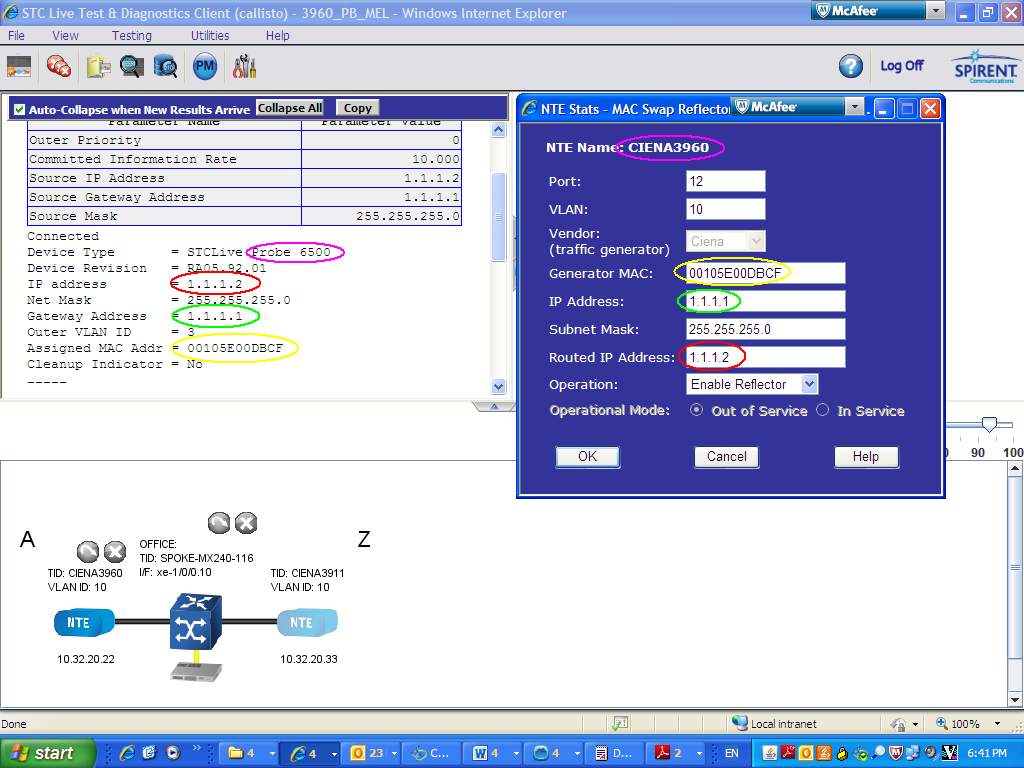
If your Mac has user-serviceable RAM modules, try cleaning and reseating the modules. Remove the RAM, use a clean pencil eraser to clean the RAM modules' contacts, and then reinstall the RAM. Once the RAM is reinstalled, run the Apple Hardware Test again, using the extended testing option.
TestGen test bank and test generator TestGen helps you quickly create paper quizzes and tests that supplement the content in your textbook, without creating extra work for you. Align questions to your book Download the TestGen desktop application and test bank for your Pearson textbook. Testgen(mac) Elem of Writing REV 98 2nd on Amazon.com.FREE. shipping on qualifying offers. Mycobacterium Avium Complex (MAC) in Miniature Schnauzer Mycobacterium avium complex (MAC) is a group of mycobacteria that contains potentially pathogenic organisms. The MAC includes Mycobacterium avium and Mycobacterium intracellulare. These organisms are commonly present in the environment – in soil, water and air. TestGen comes in a version for Windows (XP, Vista, and 7) and a version for Mac OS X (10.4 or higher). File.org does not provide software hosting. We send you directly to the developer's site, to make sure you download the latest, original version of the program.
Genomia s.r.o.
Republikánská 6
312 00 Pilsen
e-mail: laborator@genomia.cz
» Contact & location
Related tests
- MAC + PRA1 doubletest for Schnauzer Miniature for better price
- MC + MAC doubletest for Schnauzer Miniature for better price
Mycobacterium avium complex (MAC) is a group of mycobacteria that contains potentially pathogenic organisms. The MAC includes Mycobacterium avium and Mycobacterium intracellulare. These organisms are commonly present in the environment – in soil, water and air. Therefore, dogs are often exposed to this pathogen, however usually they are not at risk because dogs posses natural resistance to infection with MAC. But in susceptible patients these organisms are capable of producing generalized disease due to a defect in the immune system. It has been proven the importance of genetic factors in determining both susceptibility to infection and whether or not there is subsequent development of clinical disease.
The MAC infection is a life threatening disease. The primary sign is lymph node enlargement as well as liver and spleen enlargement. The affected dog is lethargic and shows further symptoms such as vomiting, anorexia, weakness and fever. The dogs may also suffer from runny nose, conjunctivitis, diarrhoea, blood in stool or respiratory problems. The infection is incurable and always fatal.
Test Generator For Mac

The genetic disorder causing susceptibility to MAC infections has been discovered in Miniature Schnauzer. All these affected dogs were related to a particular dog under suspicion of being a genetic source for the potential immune system defect allowing a MAC infection. The most cases were diagnosed in the USA and Canada, but some cases were reported from Poland and other parts of Europe. The occurrence of polymorphism carriers is approximately 10% in Europe and North America.
The polymorphism is recessively inherited. The increased susceptibility to MAC develops in dogs which inherit the variant gene from each parent. These dogs are designated as P/P (positive/positive). The carriers of the polymorphism are designated as N/P (negative/positive). The carriers inherited the variant gene from one parent only and are without clinical signs. However, they pass the disease on to their offspring. When mating two heterozygotes (N/P), there will be theoretically 25% of the offspring healthy, 50% of the offspring will be carriers and 25% of the offspring will inherit the polymorphism from both parents and will be in risk of MAC. Mating one healthy dog (N/N) with a carrier of this polymorphism (N/P) will theoretically produce 50% carriers and 50% healthy offspring. If a carrier (N/P) is mated with an affected dog (P/P), there will be theoretically 50% affected dogs and 50% carriers.
The increased susceptibility to pathogenic organisms M.avium and M. intracellulare is caused by gene variant in CARD9-gene that has an important regulatory function in cell apoptosis and plays an important role in natural immune response to pathogens such as, for example, yeasts.

MAC is potentially infectious for humans. The health of people is not at risk, because humans generally have the same innate immunity to this pathogen as dogs. However, persons with HIV/AIDS, diabetes, cancer or other immune system disorders should consult with their doctor if they have dog diagnosed with MAC.
.
Reference:

Errolyn Martin: Disseminated Mycobacterium Avium Complex Infection in Miniature Schnauzers
Keijiro Mizukami, Angella Dorsey-Oresto, Karthik Raj, Anna Erings, Eva Furrow, Gary S. Johnsom, Urs Giger: A codon deletion in CARD9 gene causes increased susceptibility to Mycobacterium Avium complex in Miniature Schnauzer Dogs: The 9th international conference on canine and feline genetics and genomics
Result report preview
Breed list
Although you can export a TestGen assessment as an RTF file, you cannot import this RTF file directly into Mastering. First, you must remove the advanced formatting options that optimize the TestGen file for printing. This can be a time consuming process.
To import a TestGen file, depending on the complexity of the questions it may be faster to either:
- Save the file as plain text (.txt), make edits, and save it as an RTF file.
- Copy the text into an editor such as WordPad (Windows) or TextEdit (Mac), make edits, and save it as an RTF file.
If plain text removes formulas or other formats you want to keep, or if you'd rather use a different word processor, save the TestGen file as an RTF. Then use the program's 'reveal codes' feature if it has one, to more easily see formats to delete. (For example, in Word, use Format > Reveal Formatting.)
To prepare TestGen questionsClear all formatting such as bold and italic.
In Word, press Ctrl+A to select all text in the document, and select Edit > Clear > Formats.
Remove:
- Nonbreaking spaces
- Hard carriage returns (manual line breaks)
- Section breaks
- Page breaks
- Tabs
- Nonbreaking hyphens
If you're using Word, see To remove breaks and tabs for a quicker way to remove these characters.
If the document has multiple columns, format the text into a single column.
In Word:
- Select View > Print Layout.
- Select Format > Columns.
- For Number of columns, enter 1.
- For Apply to, select Whole document, and choose OK.
- Delete header information, such as Exam Name.
- Delete any introductory text before question numbers.
- Delete answer areas (blank lines at right) and include each answer on one line, flush left beneath the question.
- Format questions and answers as described in Preparing multiple choice questions and Preparing essay questions.
Save the file.
If you edited a plain text file, be sure to save the file as an RTF (file.rtf).
 To remove breaks and tabs in Word
To remove breaks and tabs in Word- Select Edit > Find.
- Choose the Replace tab.
- Select More at the bottom.
- Choose Special at the bottom, and select Nonbreaking Space.
- Select Replace All.
With the Find and Replace window still open, individually select a different option for Special (shown below), and choose Replace All after selecting each:
- Tab Character
- Section Break
- Manual Line Break
- Manual Page Break
- Nonbreaking Hyphen